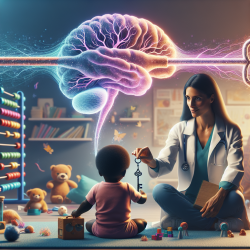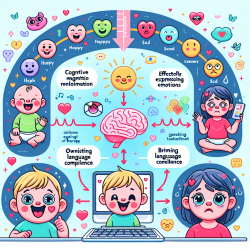Introduction
In the ever-evolving field of speech-language pathology, the concept of neuroplasticity offers a beacon of hope for improving therapeutic outcomes. Neuroplasticity, the brain's ability to reorganize itself by forming new neural connections, is a powerful mechanism that can be harnessed to enhance cognitive and motor learning. The research article "Harnessing Neuroplasticity for Clinical Applications" provides valuable insights into how practitioners can leverage this phenomenon to achieve better results in therapy.
Understanding Neuroplasticity
Neuroplasticity is the nervous system's response to intrinsic or extrinsic stimuli by reorganizing its structure, function, and connections. This ability is crucial for recovery from brain injuries, adaptation to new learning environments, and even in response to therapy. The research highlights how neuroplasticity can be both adaptive, leading to improved function, and maladaptive, potentially resulting in negative outcomes.
Clinical Implications
For practitioners, understanding the principles of neuroplasticity can significantly enhance therapeutic strategies. Here are some key takeaways from the research:
- Experience Dependence: Neuroplasticity is heavily influenced by experience. Tailoring therapy to include relevant, engaging activities can maximize the brain's adaptive changes.
- Time Sensitivity: Timing is crucial. Interventions are most effective when they align with the brain's natural periods of heightened plasticity.
- Motivation and Attention: These are critical modulators of neuroplasticity. Therapists should incorporate motivational strategies to engage clients actively in their therapy.
Practical Applications
Practitioners can apply these principles in several ways:
- Task-Specific Training: Focus on exercises that are directly related to the client's goals and daily activities to encourage functional improvements.
- Incorporating Technology: Utilize tools like virtual reality or online platforms, such as TinyEYE, to provide immersive and interactive therapy experiences.
- Continuous Learning: Stay updated with the latest research and methodologies to refine therapeutic techniques and adapt to new findings.
Encouraging Further Research
While the current research provides a solid foundation, there is still much to learn about the intricacies of neuroplasticity. Practitioners are encouraged to engage in further research and collaboration with neuroscientists to explore new therapeutic avenues and refine existing practices.
Conclusion
By understanding and applying the principles of neuroplasticity, speech-language pathologists can significantly enhance their therapeutic outcomes. This approach not only supports the recovery and development of clients but also contributes to the broader field of neuroscience and therapy.
To read the original research paper, please follow this link: Harnessing neuroplasticity for clinical applications.










